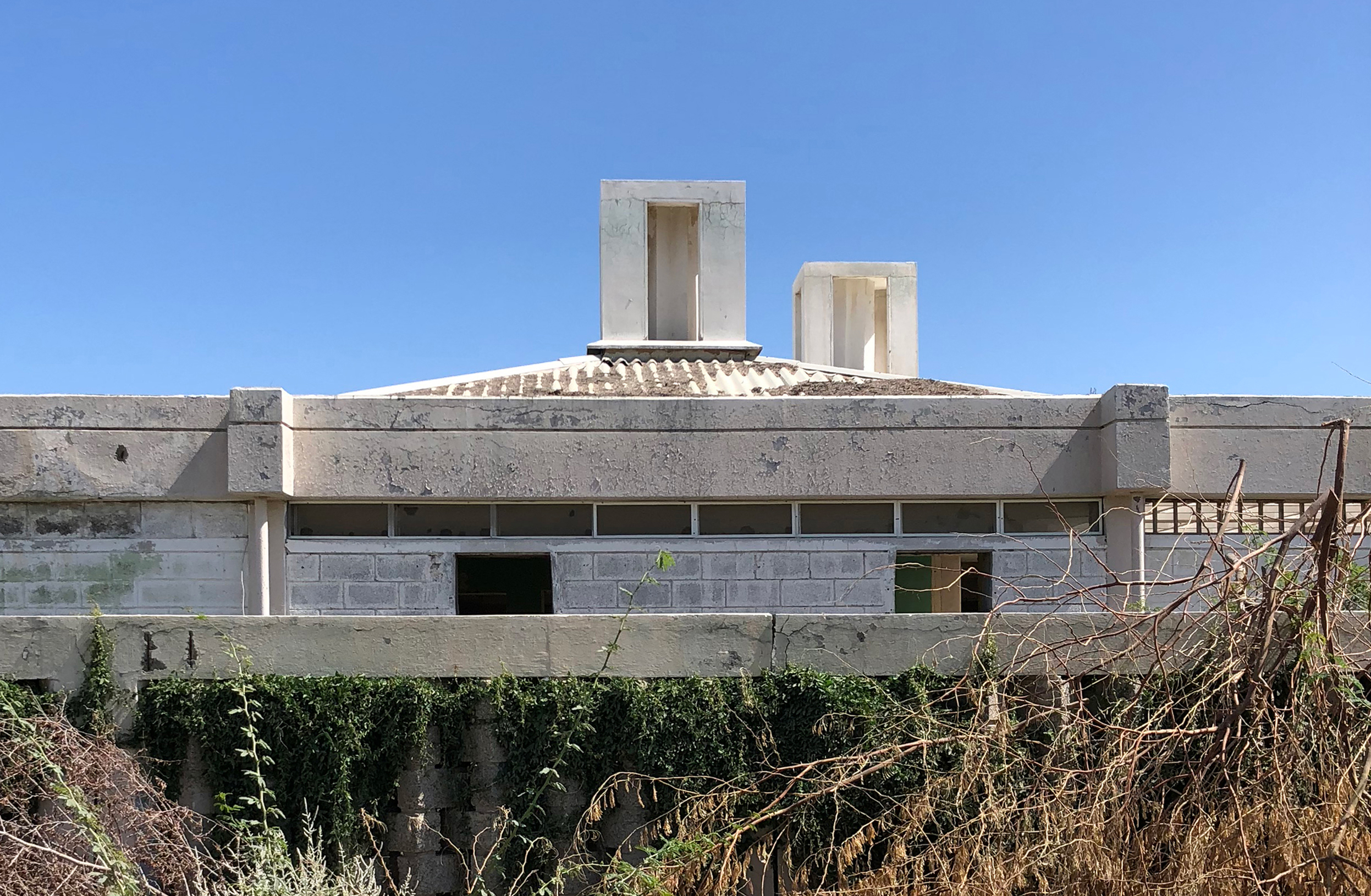

Description
In the 1970s, acclaimed modernist architects Georges Rais and Jafar Tukan were commissioned to design a prototype for kindergartens to be built across the UAE. Of the tens that were built, some have been demolished, and others have been repurposed. The only Rais and Tukan kindergarten in Kalba, constructed in 1979, was recently abandoned. Sharjah Art Foundation acquired the building in 2016 with plans for turning it into a community centre to serve the cultural needs of the city. Since its acquisition by the Foundation, the kindergarten has been the site of Mohamed Bourouissa’s Sharjah Biennial 14 work Blida-Joinville (2018–2019), which brought into conversation the architecture and histories of a psychiatric hospital in Algeria and the school in Kalba.
This essay discusses the intricate architectural features of the kindergarten in Kalba, which responds to geographical, environmental and cultural contexts within a cluster typology adapted to suit young learners.
Summary
The federation of the United Arab Emirates brought about opportunities for major developments in the young nation. Among the top priorities was to encourage Emirati citizens to seek education in order to lead the country towards a prosperous future. As part of this initiative, the government commissioned the design of prototypes for public kindergartens and schools across the emirates. The first kindergarten prototype incorporated eight classrooms, but eventually a new design was needed in order to accommodate the major increase in student enrolment.
In 1974, an architectural firm based in Beirut was commissioned to design a kindergarten prototype. The firm was run by acclaimed Arab modernist architects Georges Rais and Jafar Tukan. The 12-classroom kindergarten, which accommodated 365 students, provided an intimate environment for students within a cluster typology. It maintained a balance between designated learning spaces and areas of convergence as well as interior and exterior places within each classroom. The design responded to geographical, environmental and cultural contexts with a contemporary lens while maintaining an efficient, sustainable and streamlined process. To provide ventilation and cooling, the distinct pyramidal roofscape integrated a wind tower, resembling in its function the traditional barjeel system.
Tens of kindergartens adhering to this prototype were constructed across the UAE. Some were repurposed; others were demolished. The kindergarten in Kalba, on a vast plot overlooking the Gulf of Oman and with a backdrop of the Hajar Mountains, was the only one in the city for many years, but it was abandoned after a new kindergarten design was conceived. The kindergarten now exists in a derelict condition, but the site has been acquired by Sharjah Art Foundation and will be repurposed as a community centre for the residents of the city.
Since its acquisition by the Foundation, the kindergarten has been the site of Mohamed Bourouissa’s Sharjah Biennial 14 work Blida-Joinville (2018–2019), which brought into conversation the architecture and histories of a psychiatric hospital in Algeria and the school in Kalba. As part of the preparation for Bourouissa’s work, participants in a workshop drew on and coloured the inner walls of the kindergarten with designs of a virtual garden, linking the school to a patient at the Algerian hospital who developed a gardening method as a form of therapy.
To download the essay, please click here.
